 Microbes are everywhere inside and outside of us, vastly outnumbering our own cells. Their influence on every aspect of life, including our own behavior, is just beginning to dawn on us. What do they do and how much do they know?
Microbes are everywhere inside and outside of us, vastly outnumbering our own cells. Their influence on every aspect of life, including our own behavior, is just beginning to dawn on us. What do they do and how much do they know?
Previous posts discussed cognitive processes at the microbe level, such as the ability of cells to act as individuals and groups, to accurately communicate and to form structures that behave as if multicellular creatures. Microbes can solve engineering problems, such as building cities called a biofilms, and can rapidly find the best routes on maps of countries and subway systems. They also can recover from severe damage.
But, just how smart are they?
Microbe planning
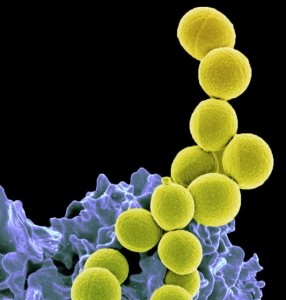 Microbes do not move randomly. They remember whether they have turned right or left. In order to move in a straight line, they, after a turn, favor turning in the opposite direction of the turn twice.
Microbes do not move randomly. They remember whether they have turned right or left. In order to move in a straight line, they, after a turn, favor turning in the opposite direction of the turn twice.
E.Coli in the gut plan for the future. When they find lactose, they turn on genes that allow them to process lactose. Simultaneously, they turn on genes for maltose digestion, somehow knowing that they will encounter maltose in the future further down the gut. When the E.Coli were given only lactose in an experiment eliminating the maltose that would naturally occur later in their travels, they stopped turning on the maltose machinery.
Group Communication
Microbes have a complex language for communication (see Microbe Communication). One chemical message tells other microbes that there is little food, encouraging other members of a colony to go in a different direction. Other messages help microbes compute how many colony members are nearby. When this number reaches a critical value, pathogens launch attacks. There is constant communication between microbes, and between microbes and human cells. This includes an even greater number of viruses in and around every cell.
 In biofilm cities, microbes defend each other from antibiotics, grow food together, and eat each other’s waste.
In biofilm cities, microbes defend each other from antibiotics, grow food together, and eat each other’s waste. 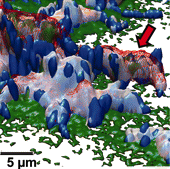 Recently, a study showed that one microbe could rapidly create a community and a biofilm attaching daughter cells and building the film. A remarkable animation video is available now showing this process.
Recently, a study showed that one microbe could rapidly create a community and a biofilm attaching daughter cells and building the film. A remarkable animation video is available now showing this process.
Games
 In a recent experiment, microbes were able to send genetic messages to other members of the colony, making it easier for the others to use enzymes that work on RNA. Viruses transport these pieces of genetic material between the microbes. The data sent by the microbes in the experiment helped other microbes succeed in a board game choosing winning squares in a grid. First, the experimenters used a small grid; later, they expanded to a 9 by 9 grid and more types of E. Coli.
In a recent experiment, microbes were able to send genetic messages to other members of the colony, making it easier for the others to use enzymes that work on RNA. Viruses transport these pieces of genetic material between the microbes. The data sent by the microbes in the experiment helped other microbes succeed in a board game choosing winning squares in a grid. First, the experimenters used a small grid; later, they expanded to a 9 by 9 grid and more types of E. Coli.
Since small microbes hold little DNA, microbes band together to solve problems that require more DNA. This ability to use multiple computational sites to solve a single problem reflects the well-known distributed processing used in advanced computers.
Microbes Defend Humans
Microbes surround every cell in the human body, ten microbes for every one human cell. By occupying this space they protect the human body with which they have a great symbiotic relationship. They are in a complex communication with the human host providing many genes that help absorb vitamins, digest food, boost the immune system, fight autoimmune diseases, maintain our proper weight, and detoxify stress. A recent study found that microbes on the skin protect through stimulating immune function. Gut microbes alter genes in the brain, which could account for some of the variations in medication effects.
Signals from beneficial microbes allow human macrophages to have a better response to interferon, which are signals released when there are dangerous viruses, bacteria and cancer cells. Without these positive microbes the scavenger cells would have a greatly decreased ability to protect against these dangerous microbes.
 A recent study showed that in the elderly gut there is a greater variation in the types of microbe colonies. Those with a greater number of colonies were more healthy and tended to be independent. Those elderly in nursing homes had fewer different types of colonies and were not as healthy. It appeared that the elderly diet is the most important variable to maintain diverse microbes and better health.
A recent study showed that in the elderly gut there is a greater variation in the types of microbe colonies. Those with a greater number of colonies were more healthy and tended to be independent. Those elderly in nursing homes had fewer different types of colonies and were not as healthy. It appeared that the elderly diet is the most important variable to maintain diverse microbes and better health.
In a very recent study it was shown that because of malnutrition a dietary lack of one amino acid had a dramatic affect on intestinal microbes, altering the communities and creating vulnerability to inflammation.
Microbes Affect the Behavior of their Host for their Advantage
 Microbes are extremely clever at finding ways through the blood brain barrier into the nervous system. They have evolved multiple mechanisms to cross the three membranes into the brain, the dura, pia, and arachnoid membranes. They are able to enter into the blood stream by affecting the cells lining the vessels. They can also enter red and white blood cells and be carried to neurons. Microbes can enter cerebrospinal fluid by affecting lining cells to make holes. They are able to enter peripheral nerves to travel along axons into the brain (see post on Viruses), and they also enter through the olfactory system that is more exposed to the outside world than other brain regions.
Microbes are extremely clever at finding ways through the blood brain barrier into the nervous system. They have evolved multiple mechanisms to cross the three membranes into the brain, the dura, pia, and arachnoid membranes. They are able to enter into the blood stream by affecting the cells lining the vessels. They can also enter red and white blood cells and be carried to neurons. Microbes can enter cerebrospinal fluid by affecting lining cells to make holes. They are able to enter peripheral nerves to travel along axons into the brain (see post on Viruses), and they also enter through the olfactory system that is more exposed to the outside world than other brain regions.
Once in the brain microbes can stimulate many different illnesses and can change the behavior of the host, often to their advantage. Aggressive biting behavior in dogs is caused by the rabies virus, which helps to spread the virus to other animals.
 Toxoplasmosis Gondi infection stimulates mice to be attracted to cats, which rapidly leads to their death and increases the ability of the microbe to infect another animal. The fungus Cordyceps infects an insect’s brain stimulating the insect to climb to the top of a plant. Once at the higher altitude the fungus destroys the insect’s brain by growing a fungus bloom, or mushroom. At this high vantage point, the sprouts from this bloom more effectively send spores over a larger area.
Toxoplasmosis Gondi infection stimulates mice to be attracted to cats, which rapidly leads to their death and increases the ability of the microbe to infect another animal. The fungus Cordyceps infects an insect’s brain stimulating the insect to climb to the top of a plant. Once at the higher altitude the fungus destroys the insect’s brain by growing a fungus bloom, or mushroom. At this high vantage point, the sprouts from this bloom more effectively send spores over a larger area.
T. Gondi also dramatically affects human beings, causing an increase in suicide, and other mental illnesses. While the cause of schizophrenia is not clear one good study showed an increase in the children of mothers who were infected with T. Gondi. Other microbes can become more aggressive and cause illness in those with too much or too little sleep.
An important new finding is that microbes in the gut send messages to the brains that influence a critical factor for healthy neurons. This important brain factor was discussed in a previous post and is called brain derived neurotropic factor, or BDNF.
BDNF has been shown to be critical for the creation of new brain cells, which occur in several parts of the adult brain. New brain cells in the memory center are essential for new learning, and healthy mental status. Lack of BNDF and new brain cells appear to be part of the mechanism of depression, and treatments that alleviate depression, such as therapies and antidepressant medications, stimulate an increase of BDNF and new cells as part of the mechanism.
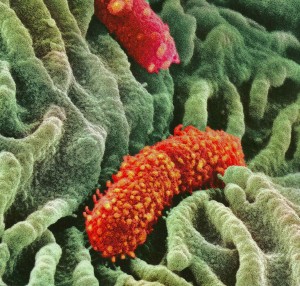 Now, a study has shown that microbes in the gut can influence BDNF in the brain and might be implicated in some forms of depression, especially in those with intestinal disorders. What was interesting from this study is that the usual ways that the gut would affect the brain were not involved in this effect. These effects of brain and behavior from microbes in the gut were independent of the known signals from gut cells, along neurons, and through inflammation. It appears that the microbes must send specific signals through the blood to the brain to affect the BDNF.
Now, a study has shown that microbes in the gut can influence BDNF in the brain and might be implicated in some forms of depression, especially in those with intestinal disorders. What was interesting from this study is that the usual ways that the gut would affect the brain were not involved in this effect. These effects of brain and behavior from microbes in the gut were independent of the known signals from gut cells, along neurons, and through inflammation. It appears that the microbes must send specific signals through the blood to the brain to affect the BDNF.
Gut Feelings and Decision Making
 The enteric nervous system in the gut includes hundreds of millions of neurons (1/1000 of brain). Most of these neurons communicate through vagus nerve of the autonomic nervous system. The neurons of the brain that have been correlated most closely with making intuitive decisions are the large spindle cells of the fronto-insular region. It has not been clear how intuitive decision are made, but it seems to involve emotional states somewhat related to the gut. Gut feelings, or intuitive decisions are defined as a rapid assessment of the probability of a favorable or unfavorable outcome of a planned behavior dependent on previous experience not using inductive or deductive reasoning. It seems to be related at least partially to emotional states, which can include gut “feelings”.
The enteric nervous system in the gut includes hundreds of millions of neurons (1/1000 of brain). Most of these neurons communicate through vagus nerve of the autonomic nervous system. The neurons of the brain that have been correlated most closely with making intuitive decisions are the large spindle cells of the fronto-insular region. It has not been clear how intuitive decision are made, but it seems to involve emotional states somewhat related to the gut. Gut feelings, or intuitive decisions are defined as a rapid assessment of the probability of a favorable or unfavorable outcome of a planned behavior dependent on previous experience not using inductive or deductive reasoning. It seems to be related at least partially to emotional states, which can include gut “feelings”.
The human gut is home to the largest and most varied community of microbes, and possibly the most influential. In this region there are trillions of microbes keeping a constant chatter among themselves, and with human immune, blood and gut cells. Microbes are key to the stress response through extensive interaction with the immune system and the gut nervous system. They are able to influence brain chemistry independent of the extensive neuronal connections to the brain. They can signal and influence important brain chemistry. Through this signaling they are able to influence behavioral response to food, and sleep. They have been shown to be important in diabetes. Is it also possible they are involved in rapid intuitive decisions that seem to be connected to emotional states related to the gut?
DNA Editing and Increased Mutations
In a risky and controversial strategy, microbes appear to be able to increase their mutation rate under stress. This allows the development of rapid increases in both positive and negative mutations. The microbe bets on the positive results.
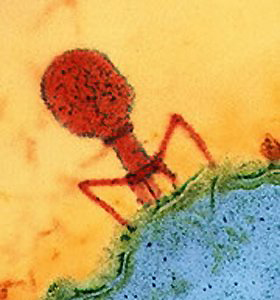
Microbes are then able to send specific helpful mutations to others in the colony through special transport mechanisms. While many genes are transferred to other microbes though phage viruses (see post on Viruses), it has recently been noted that bacteria have virus like particles that they use to send specific genes to other members of the colony. These gene transfer agents GTAs send part of the microbe’s genes but not enough to make a full new GTA particle in the new microbe as a virus would.
In fact, this transfer of genetic material is often how microbe communities overcome drug effects, including antibiotics, by sharing DNA information.
Many of the changes that occur from bacterial mutations have also helped human beings and other animals. There are countless examples of symbiotic use of microbe’s abilities with other organisms, from termite’s digestion of wood, plants’ absorption of nutrients, to the human’s need for digested fiber and absorption of vitamin K.
Conclusion
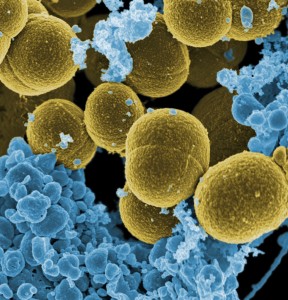 Ten microbe cells and a hundred viruses surround every single human cell. If we count the signals produced from genes of human origin, those from microbe genes inside the human body outnumber those from human genes by 100 times. We could not survive without the constant chatter from microbes. The intelligence of human cells is intimately tied to the discourse with microbe societies (see post on Cancer).
Ten microbe cells and a hundred viruses surround every single human cell. If we count the signals produced from genes of human origin, those from microbe genes inside the human body outnumber those from human genes by 100 times. We could not survive without the constant chatter from microbes. The intelligence of human cells is intimately tied to the discourse with microbe societies (see post on Cancer).
With a flood of new research information on the microbiome (all of the microbes in and around us), the very advanced abilities of microbes are just now being recognized. Microbes could not have these abilities without cognitive processes inside the microbe cell.